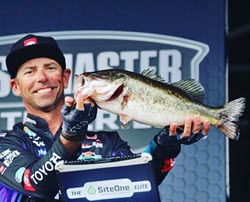
When the water is cold, or cold but warming up, a lipless crankbait is an absolute killer. There’s a misconception that it’s only good in the spring. I hear that all the time, but this is a lure that works in all four seasons. It’s during the winter and pre-spawn when it really shines, though.
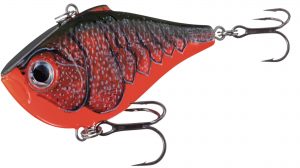
abyLet’s back up for a second. What is a lipless crankbait? Well, as the name suggests, and you probably guessed if you didn’t already know, it’s hard-bodied like a crankbait, minus one thing…The lip! It’s that design that makes it so effective for bass because it preys on most of their senses: It produces sound through BBs or rattles; it vibrates as you move it; and its profile is about as fishy as possible.
All of that means it produces two kinds of strikes: Fish that are already inclined to eat will attack it violently, and those that are in a neutral or negative mood will strike as a form of reaction.

You can get away with carrying three or so basic sizes – small, medium and large. Your choice of which one to employ should be based on the depth that you want to fish and an attempt to “match the hatch” of the prevalent forage. There are dozens of different colors available, but I generally dumb down my selections. I’ll use chartreuse and greens to imitate bluegill and perch. I’ll use chromes and pearl patterns to imitate shad. Finally, I always carry browns and reds to emulate crawfish. Those red ones are particularly good in the springtime.
Straight out of the package most of the quality lipless cranks work pretty well, but with a few hook
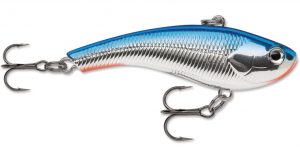
modifications and tricks you can consistently put more fish in the boat. One thing I do is replace the belly hook with a treble that’s one to one and a half sizes larger – so, if for example the lure comes with a #4, I’ll swap it out for a #3. The belly hook is protected by the broad flat nose of these lures so you can get away with that. If I’m fishing in relatively open water, I may change out the back hook, too.
What about ultra-heavy cover like lily pads, milfoil, brush and laydowns? Most people think you can’t use these lures in those places, but I do it a lot. The key is to remove the back hook altogether. It may cut down on a few hookups, but you’ll get strikes that no other lure would produce.
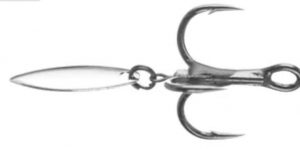
You can also change out the type of treble that you use. In clear water I use a VMC bladed hybrid model, and in dirty water I like a feathered treble.
When it comes to line, I either use exclusively fluorocarbon from knot to spool, or exclusively mono. The former lets the bait get down a little whereas the latter keeps it higher in the water column. Why not braid? It’s because I want a little bit of stretch in my line – not only does it help the fish engulf the bait, but it also cuts down on losses during the fight, especially when a bass jumps.
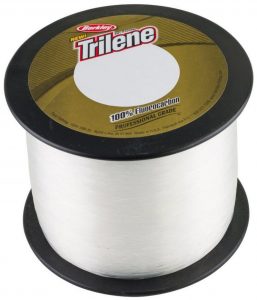
For that same reason, I like a relatively spongy crankbait rod, something that gives on the hook set or when the bass surges. I promise you that if you use a stiff, heavy rod you will lose fish. Also, with a stiff rod when the lure bogs down in grass and you snatch it out, it’ll pull forward. A cranking rod, on the other hand, will snap it out and up like a rubber band. That moment of elasticity is when I tend to get a of bites. I pair the rod with a medium-speed reel – something in the 6:1 through 7:1 range. I don’t want something 8:1 or more, and I don’t want something ultra-slow.
During the colder months there are two ways I retrieve these lures, depending on the type of cover. When it’s warmer, that opens up lots of options, including burning it, but when it’s cold you want to be a little more deliberate and force feed them.
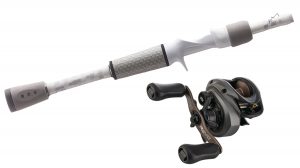
The first technique involves a yo-yo motion Make a long cast past the fish, let the lure fall to the bottom, then lift your rod from 3 o’clock to 12 o’clock and follow the slack back down. It looks just like an injured baitfish or a crawfish scooting away backward. You’ll get lots of bites as you lift or as the lure goes aimlessly back to the bottom. It’s an easy meal.
The second retrieve, which I use around cover, involves that same yo-yo motion, but on the upward stroke I add a little wrist snap. The thicker the grass, the harder the snap. Especially when bass are non-responsive or not active, you’ll find that they often grab the bait as you snatch it out. It’s a great triggering mechanism.
I hope that you’ll try this system out as soon as possible. It’s in my top five techniques when it’s cold, and it’ll produce some true giants.
________________________________________________________
Like Ike on Facebook, and follow him on Instagram and TikTok for fishing and fun content.
Subscribe to Mike’s YouTube channel, to ensure you see every adventure video. (Download the YouTube app on your phone and the videos will come to you automatically.)
Return to Mike Iaconelli’s website
















